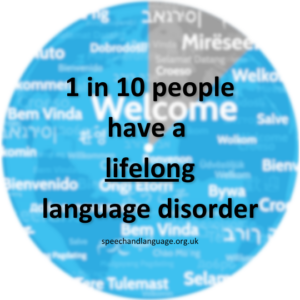When your biggest little ones go off to reception, it’s an emotional time for everyone. Every child who attends your nursery will have started their learning journey with an abundance of love, patience, and care from your practitioners.
Ensuring they have a smooth nursery-to-school transition is your last responsibility before they go off into the big wide world of ‘big’ school.
As childcare before school age isn’t mandatory, there’s no statutory guidance for nurseries with EYFS transition – only good practice.
We share all you need to know to secure a smooth EYFS transition for your nursery leavers.
What documents to share for EYFS transition
It’s likely that your nursery has a selection of documents they share with the new primary school. Paper-based or digital, these documents will help the child’s new setting hit the ground running.
If a child is moving rooms in your nursery, this can be just as important. New surroundings, new routines and new practitioners can take a while to get used to. Helping children with in-house nursery transitions can prevent any development regression.
SEND transition information
The most common age for children to receive a diagnosis for Special Educational Needs or Disability (SEND) in the UK is 9. This means that unless a child already has a diagnosis for SEND (including medical conditions), they will be at the evidence-collection and exploration stage.
Sharing all information related to SEND assessments, possible considerations, and professional observations can give new EYFS teachers a jumping-off point when they plan their provision.
Speech, Language and Communication Needs (SLCN) are the most prevalent SEND needs in the UK. Early intervention opportunities are important to support children with SEND, like Language Disorders.

EYFS Transition report
Your setting may have a standard EYFS transition report filled in for the new school. Alternatively, if you use a nursery management platform, you can download the important information to share with the new setting.
Top Tip: When sharing information with primary schools, be mindful of data protection and GDPR in nurseries, including the seven GDPR principles you must adhere to. You may need a parent’s digital consent to share certain data and information.
An EYFS transition report can include previous summative assessment reports, like the two-year-old progress check (if the child attended your nursery then). You can download EYFS transition forms to manually fill in the child’s progress in the seven areas of learning.
If you’re time-conscious, downloading important EYFS tracking information from your nursery software will save time.
Useful information for transition
The parents will likely share information about their family circumstances with the new school. If there have been any previous safeguarding concerns relating to a family member during their time at your nursery, you may find it important to share this information.
Although the new setting will learn all new information about a child, their likes and dislikes from nursery are still relevant. For those who may need additional support to settle into a new setting, important information stored on the Child Profile can give new EYFS teachers some ideas for conversation starters.

When to begin nursery transitions
Early years transitions should be a process, not a single event. The move from the baby to the toddler room may be the first transition of that kind a child experiences. Taking time to introduce change gradually can help to settle a child (and their parents) quicker.
A good time to start thinking about nursery-to-school transitions for September is around primary school offer day, which is often in April each year.
At least two months before a transition is coming, preparations should begin. This includes big EYFS transitions like changing key workers, nursery room moves, or moving onto primary school from nursery.
Top Tip: If you’d like top tips from a primary school headteacher on supporting parents through the primary school admissions process, we have you covered.
How to prepare children for school transition
Children can find EYFS transitions disruptive. Toddlers and babies thrive on routine, so changing a routine can cause upset and confusion. There are a few areas to consider when you are preparing children for transitions:
Emotional regulation
Now for some science! Our limbic system houses a part of our brain called the amygdala, which controls our emotional regulation potential.
Children under five don’t have the same emotional regulation capacity as adults – their brains are still working away to build neural connections in lots of different areas.
Changes to routines that induce the stress hormone cortisol can require a great deal of emotional regulation to manage big feelings – a lot to ask from an adult, let alone a 3- to 4-year-old.
Helping children develop emotional regulation strategies through PSED activities in the early years may not prevent ‘meltdowns’ or outward displays of upset, but it can help build the foundations of mentally healthy habits later in life.
Top Tip: Ofsted evaluates how schools support emotional regulation when assessing children’s mental health and wellbeing. Incorporating mindfulness activities into your daily routine can be a win-win.
Managing change in the nursery
Whether a child is moving to primary school, changing nursery rooms, or experiencing changes in their home life (e.g., a parent separation, or moving houses), support to manage these changes is essential.
Here are some top tips on how to manage change in the early years:
- Recognise the change
- Model your own methods of regulation and naming of feelings
- Prepare to introduce the change in small steps (if possible)
- Organise a bridge between the old and the new (a familiar face, for example)
- Communicate effectively with the parents (to remind them of changes to routine or environment that are upcoming)
- Celebrate positive steps
Communicating with parents during school transition
When parents receive their allocated school place, it can throw up a whole bunch of new questions and worries. You and your practitioner team can help to alleviate some of the school transition stress through effective communication.
Encourage questions from parents
Noticing several parents are asking the same questions on the build up to school transition? Encourage parents to send in their concerns or questions ahead of the transition and address them in one go.
If you use nursery management software to communicate with your parents, you can address these questions individually or via a shared newsletter, explanation video, or message of reassurance – helping you to stay connected.
Your nursery may have one or many local primary schools. Encouraging parents to meet to discuss any first-day-of-school worries (and there will be plenty!) can help ensure a smooth transition.
Consider organising a coffee morning for nursery leaver parents to mingle and meet other parents whose children will be attending the same school.
Top Tip: Don’t forget that word of mouth is one of the most powerful marketing strategies for your nursery. By making the transition from nursery to school smooth, your parents will appreciate the efforts, talking to their network about the thought and care that your setting has shown.
Encourage uniform swaps
School uniforms are expensive, and with the rate at which children grow, they can easily outgrow them in mere months. Consider the financial strain purchasing several uniform items can place on your nursery parents and pose a uniform swap meet.
Your setting doesn’t have to organise and run this uniform swap, but giving the parents the ideas and options can help save families a few pennies.
Nursery practitioners’ role in EYFS transition
Your nursery practitioners are always sad to see children move to big school, especially if they have known them from the baby room. Practitioners play a huge part in EYFS transition and are often the first point of contact when parents have questions or concerns.
Nursery practitioners can help aid a smooth school transition in a number of ways.
Early years transition activities
Transition activities can begin long before the children’s final weeks at the nursery. Transition activities for nursery should consider the changes the children will encounter when moving settings or rooms.
Plan activities that introduce the children to new environments and people. A familiar face can reduce first-day-of-school worries, so you may need to be creative about orchestrating this – especially if you have several primary schools in the area.
Top Tip: We suggest contacting the local primary schools and asking for their EYFS teachers or teaching assistants to record a short video reading a story or poem. Sharing this with the children helps to build positive relationships before their first day starts.

PSED EYFS activities for transition
Personal, social, and emotional development activities will be a staple in your nursery’s curriculum. Increasing the frequency and type of PSED activities the children engage with in the build-up to transitions can equip them with foundational emotional literacy skills.
Encourage children to share when they feel nervous or unsure about tasks, situations or future events.
Top Tip: If you’d like access to a shed-load of PSED activities and advice from an EYFS-specialist psychologist, we have a blog for that!
A poem for nursery leavers
Wracking your brains for fresh nursery leaver ideas? Wrack no more.
Thinking of a way to thank your parents for their years of loyalty over the years without spending a fortune can be tricky. We have created a poem for your nursery leavers as the perfect (and cheap) nursery-leaving gift for your parents.
You’re amazing and special,
An honour watching you grow,
Now on to the next chapter,
We’re sad seeing you go.
You joined us so small,
And have blossomed and grown,
You’ve worked really hard,
To reach every milestone.
We’re glad that you chose us,
To start you off well,
You’re one of the gang,
And in a nutshell...
We love you, we’ll miss you,
You’ll always belong,
Come back and say hi,
For a hug or singsong.
So here is a wave,
A big goodbye to you,
A new adventure awaits...
Show them what you can do!
We recommend you print a picture of the child and their key worker onto a small card. The poem can be personalised for your setting, and a tea bag attached to the card.
We’d love to see your nursery leaver creations over social media. Share your personalised nursery leaver’s poem with us via: